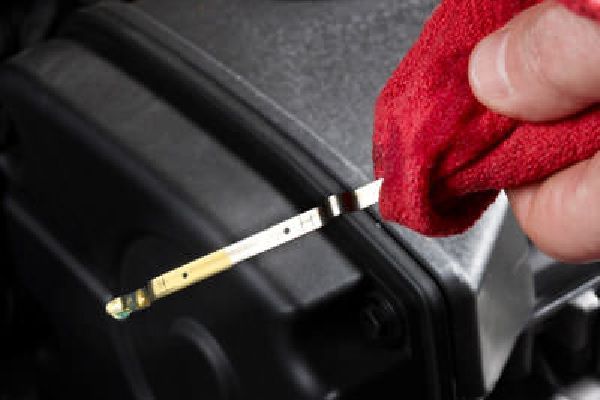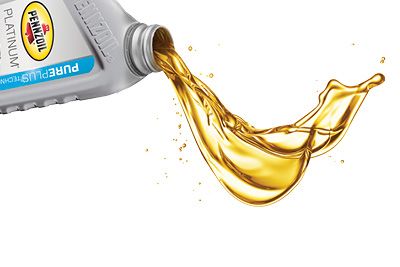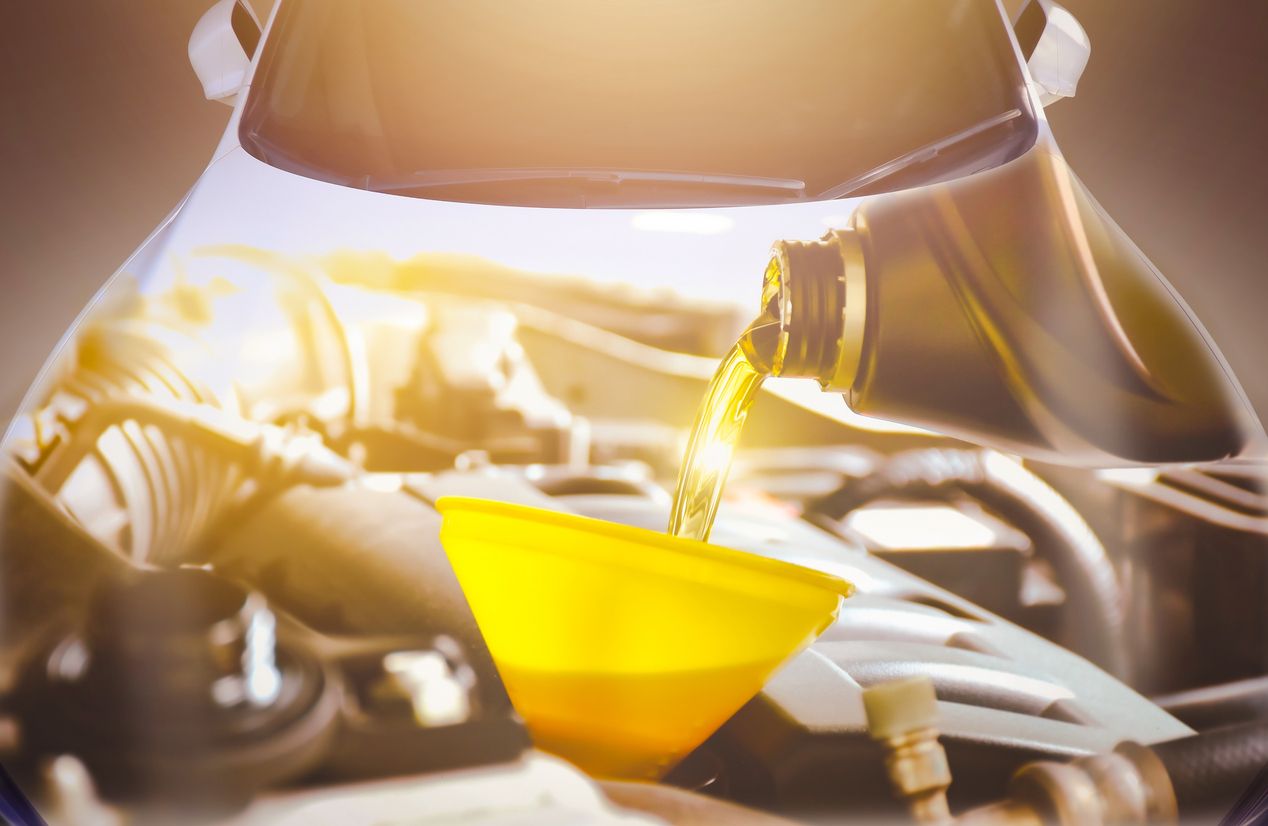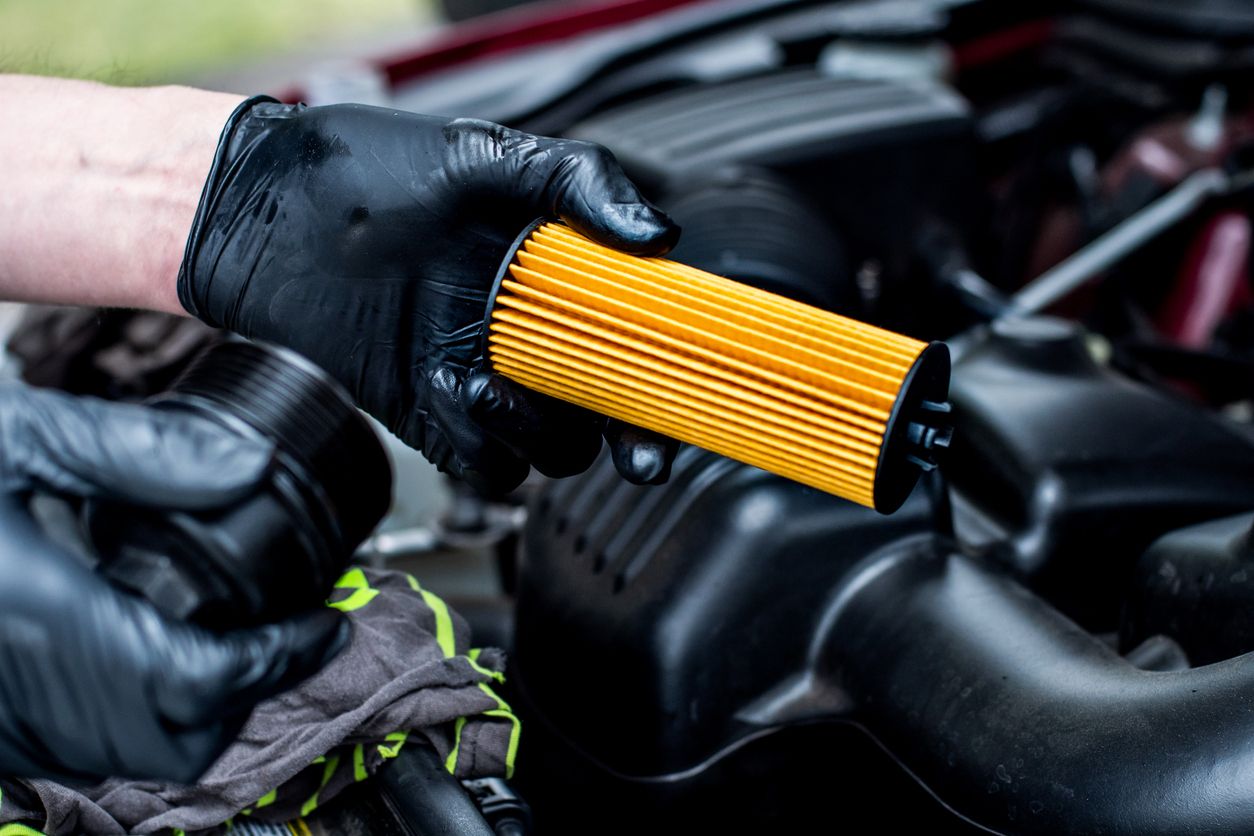What is engine sludge?
Engine sludge is as nasty as it sounds, with more disgusting nicknames like “mayonnaise sludge” (soft consistency) and “black sludge” (hard consistency). Sludge is old and congealed oil resulting from excessive contamination, heat and oil additive breakdown. Sludge typically forms over a long period of time and generally builds up when a vehicle owner skips oil changes or travels many miles past the recommended oil change interval.
How does engine damaging sludge form?
One day your oil is shiny and slick but, over time, that incredible lubricant can become gunky and provide less effective protection for your engine parts. This is an extreme condition, but what could turn such a vital liquid into a gunky, engine clogging mess, you ask? Here are a couple scenarios.
- Delaying your oil change is the main culprit. Over time, motor oil becomes contaminated with engine metals, acids and air humidity, eventually transforming into sludge. Waiting too long to change your oil will increase the likelihood of sludge infecting all the parts where motor oil travels. So don’t be a slacker, get it changed!
- Don’t stress out your oil. Prolonged stress and under-hood heat can lead to sludge filled consequences for your engine oil. Humidity plays a big role in oil consistency. The more humidity that enters your oil system, the sludgier and harder the oil gets. Relieve some stress by changing your oil regularly before it wears out.
Sludge is no laughing matter. Allowing it to build up could mean serious trouble for your engine. Follow your vehicle’s recommended oil change intervals, take into account your driving habits, and save yourself the aggravation engine damaging sludge creates.
How do driving conditions affect oil?
Oil is kind of a drama queen. It only can withstand so much before it starts to become a hot mess.
Ask yourself the following questions. If you answer ‘yes’ to any of these, call us. Seriously. A yes to any of these questions means you could probably benefit from an oil change more frequently to ensure your engine’s protected.
- Do you constantly drive in high temperature conditions? Excessive heat causes the oil to breakdown resulting in sludge and engine deposits. High temperatures also cause oil to thin out; typically resulting in metal on metal grinding or wear in your engine. Ouch. Trust us, it’s as bad as it sounds. This problem typically can become even more severe if you tow heavy loads or if you leave your car running idle for extended periods of time. A higher grade oil will greatly benefit your vehicle in this situation. And that’s why we offer a full range of quality motor oils, honed by the liquid engineers at Pennzoil motor oils.
- Do you frequently drive short distances? Get this: Repeated short distance driving means your oil may not have time to reach optimal operating temperatures. This enables water (condensation) and combustion bi-products, such as smoke, to dilute oil, accelerating the breakdown of your oil and shortening the lifespan of your engine components.
Find out more about our oil change services that help protect your engine.
How do climate conditions affect oil?
It’s all about the extremes. Very hot or very cold temperatures will cause faster oil breakdown, requiring oil changes sooner. Here’s why.
- Surviving frigid temperatures requires thinner oils. If you live in a very cold climate your oil gets thicker as the temperature drops. The end result? Oil is harder to pump during startup, potentially leading to accelerated engine wear and difficulty starting your vehicle. Remember, thinner oils are ideal during winter. The lower the grade (0W), the thinner the oil, the easier your car will start during those deep freezes.
Note: Always make sure you are adding the proper motor oil to your vehicle. Check your owner’s manual or call us to determine the proper oil grade for your vehicle.
Oil is a fickle friend. Make sure to double check your owner’s manual and check with your oil technician for the proper oil for your region.
How do I check the condition of my oil?
Unfortunately, simply looking at the oil or rubbing it between your fingers won’t tell you everything that is going on inside your engine. Wouldn’t that be convenient? Some symptoms that may indicate a problem with your oil are: low oil pressure, engine overheating, or difficulty starting in cold weather.
Check it yourself: Visually examining oil on your oil dipstick may help identify excessive oil thickening or water contamination.
- Step 1: Park your car on a level surface. Parking on an incline will give you an inaccurate reading of your oil level when you pull the dipstick out.
- Step 2: Wait until the engine is cold (oil expands when it is hot).
- Step 3: Is the engine cold? If not, go back to Step 2.
- Step 4: Withdraw the dipstick, wipe it with a paper towel or rag, and reinsert it all the way back until it’s back in place. Now, withdraw the dipstick again, hold it horizontally, and read the oil level on the dipstick (every dipstick has a safe oil level indicator).
- Step 5: How does the oil look? Before you reinsert the dipstick, check the oil consistency. If your dipstick has a white, milky discoloration, this means excessive moisture has entered your motor oil. In this case, set up an oil change as soon as possible.
- Step 6: Add oil as necessary by unscrewing the oil filler cap, which is about 3 inches in diameter and located on the very top of the engine and typically labeled ‘Engine Oil.’
- Step 7: Recheck the oil level with your dipstick to make sure you’ve added enough oil.
- Step 8: Screw on 'Engine Oil' cap and make sure it is secured tightly.
- Step 9: Get an oil change. If your oil level is low, how long has it been since your last oil change? It may be time to schedule one.
Have more oil change questions? Ask one of our techs.
Fun Fact: The same motor oil that you can pour for your own vehicle, Pennzoil Ultra Platinum™ with PurePlus™ Technology, is used on the racetrack by Hélio Castroneves in his No. 3 Verizon IndyCar Chevrolet.
How does oil affect fuel efficiency?
It’s a matter of thickness. The thicker the oil, the more energy (fuel burned) needed to pump it. More energy usage equals less fuel efficiency. That’s why newer vehicles are designed to operate on lower viscosity oils. The lighter the oil, the less energy required to pump it.
Caution: Always make sure you are using the right oil for your car so your engine doesn’t have to work harder than it needs to, resulting in sluggish performance.
What are some environmental facts regarding oil changes?
Some may call it ‘black gold,’ but we all know disposing of oil improperly is damaging to the environment. You’ve seen the effects an oil spill has on wildlife. Now imagine if we disposed of oil the same way. And, believe us, people have, and sadly, still do.
Here are the wrong ways to dispose of oil:
- Emptying it in the trash
- Pouring it down sewers and, consequently, into our water supply
- Dumping it on the ground
What’s the proper way to dispose of oil?
The only proper way to dispose of oil is to take it to a facility that accepts used oil for proper disposal or recycling—like us. We make it easy. Every time you bring your vehicle in for an oil change, we’ll make sure your old oil is disposed of properly.
Note: If you do your own oil change, we’d be glad to take care of your old oil, too.
What does my change oil soon light mean?
It could mean a few things. But, in most cases, it means you need an oil change. ASAP. Don’t ignore the change oil soon light. It’s time for a fresh oil change.
What’s an oil life system indicator light?
Many vehicles are now equipped with high tech ways to constantly monitor your driving conditions and mileage to determine the life expectancy of your oil. When the Oil Life System light appears, your computer system has determined you’ve reached the life expectancy for your current oil. Don’t doubt your oil life system indicator. It’s very reliable, accurate and always looking out for your engine’s best interests.
What happens after you reset the oil light?
After an oil change, we reset your oil light. Your car computer can now restart the process of counting the miles traveled since your most recent oil change. Ah, intelligent vehicles, where would the automotive world be without them? Your car computer is extremely accurate, so don’t second guess or disregard its analysis.
Quick Tip: This system is not universal for all vehicle manufacturers. Check your owner’s manual for an explanation about how the system functions in your vehicle.
What are common myths about oil changes?
These may surprise you. But, rest assured, these myths are, in fact, myths.
- Change your oil every 3,000 miles. The myth to end all myths. There once was a time when this mileage interval was the standard. However, times have changed. Today’s oils and vehicles are of higher quality and capable of handling longer mileage intervals for most vehicles.
- Synthetic oils are bad for seals. Engine seals are the little rubber parts that prevent oil leaks, and there’s a rumor out there that seal failure is caused by synthetic oils. Though that was a possibility many years ago when synthetics were first formulated, today’s synthetic oils have advanced greatly in makeup and engine protection. Bottom line: seals do age with time but not because of synthetic oils.
- Synthetic Oils Leak. This is a rumor that just won’t go away. But, rest assured, Synthetic oils don’t create or cause leaks. Now, to set the record straight, oil leaks can occur with synthetics if there’s already an opening. That’s because synthetics contain smaller molecules than conventional oils and can enter smaller crevices. But, take note, all the synthetic is detecting is a pre-existing and evolving leak — not creating it. In fact, the leak would eventually be exposed by conventional oil as the crack becomes larger.
What are some future trends in motor oil?
Every driver wants fewer oil changes. Luckily for you, the time between oil changes has increased with the increased sophistication of newer cars. The future is all about increasing engine endurance. That’s why Pennzoil is always improving their oils to protect your engine over longer intervals. As engine technology and oil keeps improving, the time that can pass before an oil change will be longer and longer.
Oil Life Systems are a recent addition by automobile manufacturers. The oil life system constantly monitors your driving conditions and mileage to determine the life expectancy of your oil. Although it measures mileage traveled and outside condition factors such as heat, double check your owner’s manual as well. It will provide you with a very accurate oil change schedule based on your vehicle.



